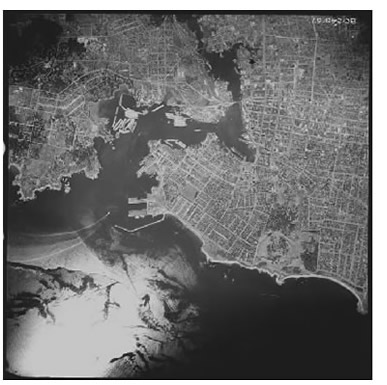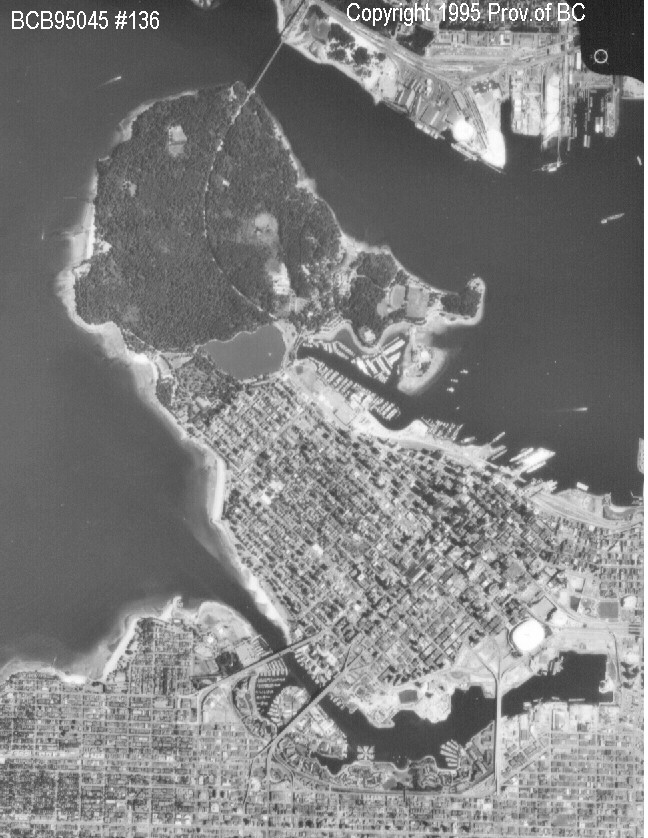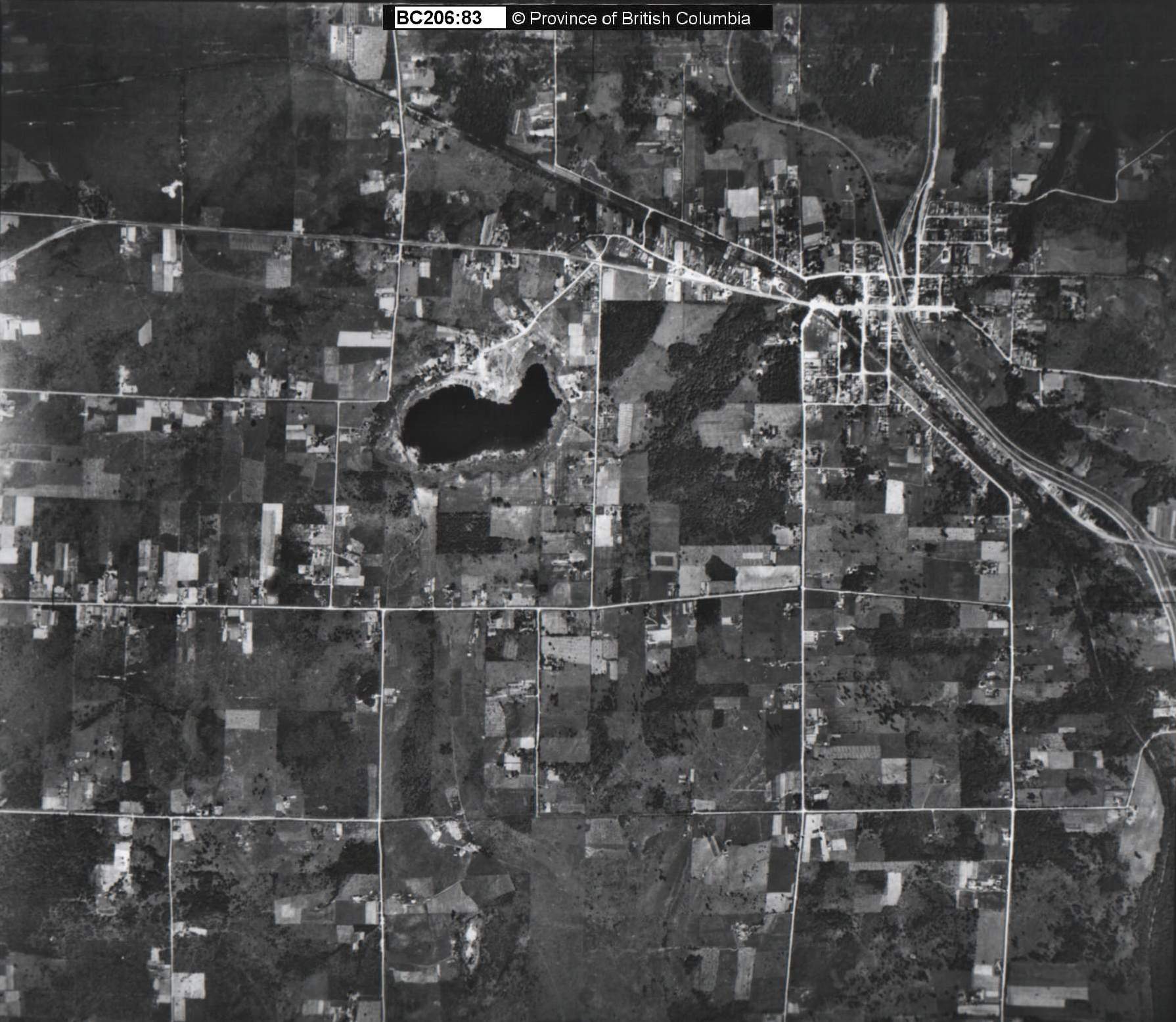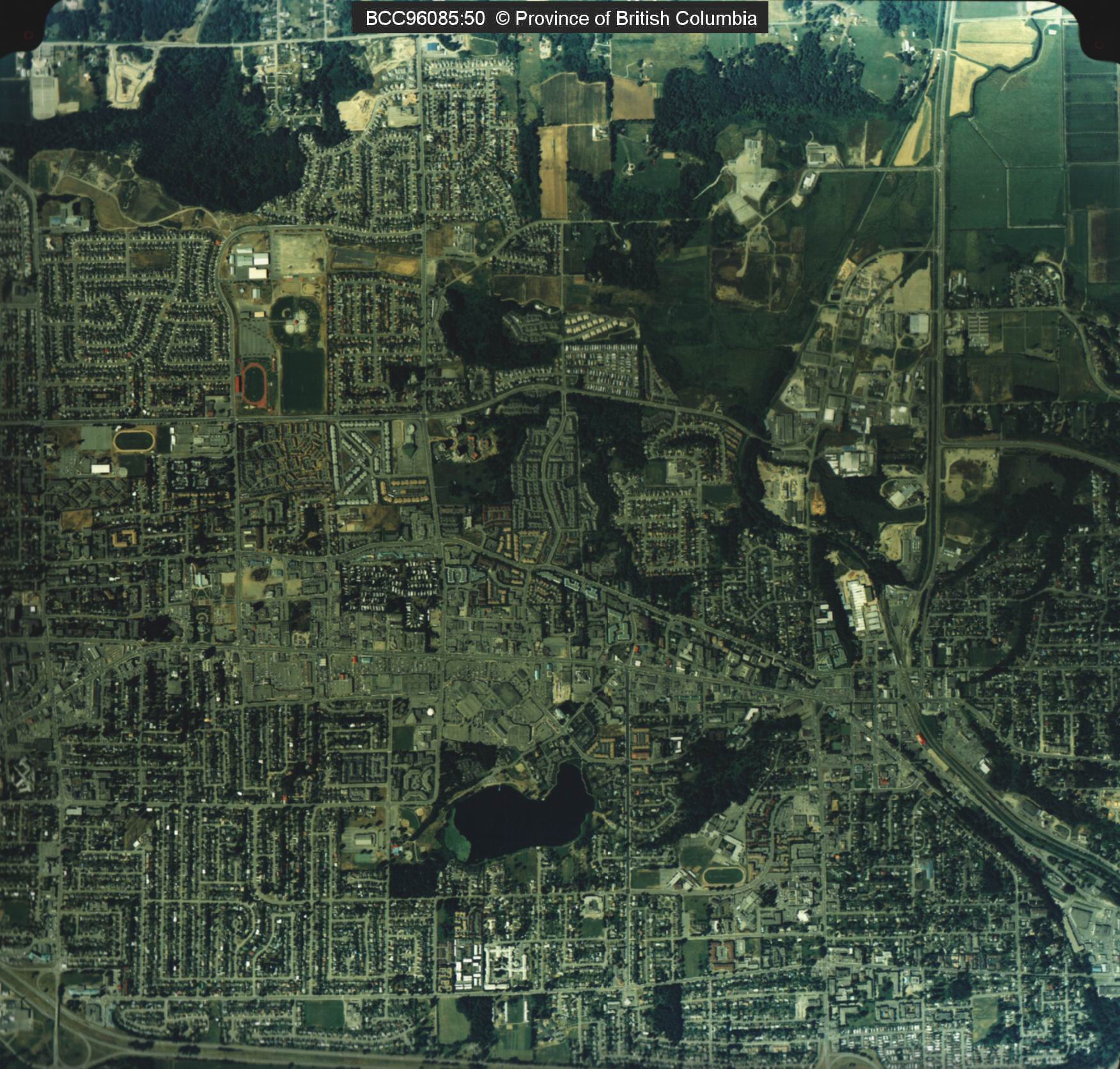Digital air photos of B.C.
Aerial photographs, or air photos, are images taken of the ground from a high altitude. Air photos are used for a variety of applications, such as viewing an area over time and noting the changes in land use.
On this page
About air photos of B.C.
The provincial government has over 2.5 million air photos of British Columbia, dating back to 1936. To date, about 500,000 air photos have been scanned from film into digital format. The B.C. Government is continuing to convert historical air photos into a digital format so they can be accessed online. Aerial photographs are exposed at various altitudes using a variety of conventional and digital cameras, providing overlapping (stereo) coverage of the ground.
Most areas of British Columbia are covered by air photos that are less than ten years old, with large areas covered by medium scale photography.
Black and white aerial photography is available for all of B.C. at a variety of scales and, in some areas, dating back more than fifty years. Colour aerial photography is becoming increasingly available for more areas of the province.
Image samples
Air photo of Victoria, 18 July 1946

Air photo of Vancouver, 1995

Air photo of Abbotsford, 1940

Air photo of Abbotsford, 1996

Get digital air photos
Air photos are available to order as high-resolution digital files. Digital air photos can be certified as to true copies and date of exposure for court or litigation purposes.
Air photos can be viewed and exported using the Web Imagery Search Interface tool. Files can be ordered from the Base Map Online Store.
Stereo pairs are available for purchase by engineering and resource professionals for mapping and interpretive purposes. Some clients may be interested in a complete, but not necessarily stereo, picture of an area.
Pricing
|
Method |
Cost |
|---|---|
|
Raw TIFF scan or rolls prefixed with BC/BCB/BCC/BCD |
$18.50 each |
|
Air photo certification, true copy or date of exposure |
$15.00 per copy of film record |
Delivery Times
|
Product |
Delivery Time |
|---|---|
|
Digital air photo scans (TIFF) |
10–15 business days, not including statutory holidays |
Technical information
Specification guidelines
Aerial photography produced with any government funds must meet B.C. Government specifications:
Scales
A photographic scale indicates that one unit of distance on an air photo is a representation of a specific number of the same units of actual ground distance. Scales can be expressed as a:
- Unit equivalent (e.g. 1 cm = 200 m)
- Representative fraction (e.g. 1/20,000)
- Ratio (e.g. 1:20,000)
The scale range for block aerial photography is 1:10,000 to 1:70,000. The scale range of site-specific aerial photography is from 1:2,500 to 1:50,000. Not all scales are available for all areas.
A large scale photo (e.g. 1:2,500) means that ground features appear larger and more detailed. The area of ground coverage depicted on a large scale photo is less than at a smaller scale.
A small scale photo (e.g. 1:70,000) means that ground features appear smaller and less detailed. The area of ground coverage depicted on a small scale photo is more than at a larger scale.
The scale of the photography varies, depending on the height of the aircraft above the ground and the focal length of the camera used. Over mountainous terrain, the scale can vary considerably within each photo.
Contact us
Air photos of B.C. are produced by GeoBC.
General enquiries: GeoBCinfo@gov.bc.ca
Deliveries Courier
3rd Floor, 3400 Davidson Ave
Victoria, BC V8Z 3P8
Mailing Address
PO BOX 9375 STN PROV GOVT
Victoria, BC V8W 9M5
